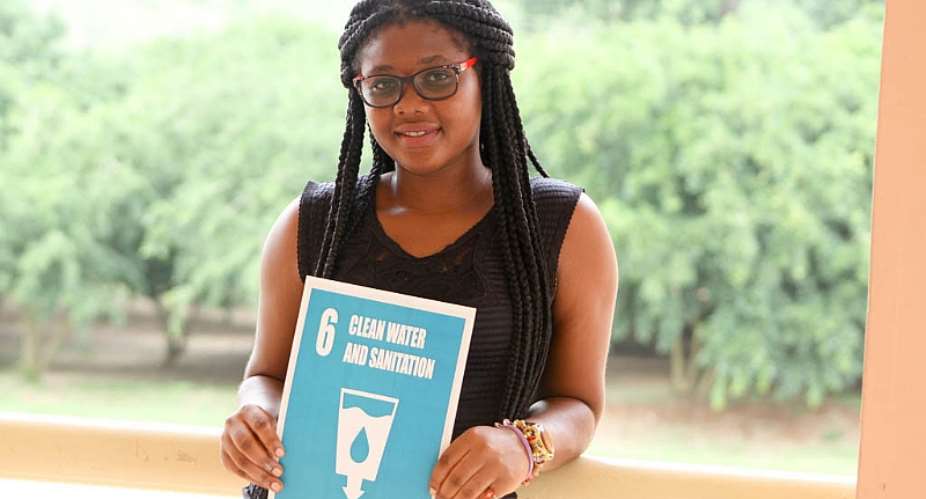A Gender Equality Advocate, Comfort Benon has urged for more education on Goal 6 of the Sustainable Development Goals (SDGs) in communities. This comes as a result of the negative consequences it has on people, specifically, women and girls.
Her view is that unlimited access to safe water and sanitation are undoubtedly human rights for people everywhere across the globe, especially for women and girls, as recognized in 2010 by the United Nations General Assembly.
For these rights, society will need the right systems: well-resourced, capable institutions delivering services and changing behavior in resilient and appropriate ways. As it stands, over 2.2 billion people worldwide lack access to safely managed drinking water services while an estimated 4.2 billion still lack safely managed sanitation services.
Unsafe hygiene practices are seen everywhere on a daily basis, degenerating the negative impacts on people’s health, especially those in deprived communities. The effect on child mortality rates is so dire with more than 297,000 children below the age of five dying every year as a result of diarrheal diseases, a consequence of poor sanitation, poor hygiene, or unsafe water
In the absence of a facility that safely separates human waste from human contact, people are rendered with no other alternative than to use unsafe public latrines or resort to open defecation. This is often a headache to women and girls, as they have to wait until the cover of darkness before going out to locate a place of convenience, a phenomenon which sometimes leaves them to be abused and sexually assaulted.
In the immediate environment, lack of an improved sanitation facility will only expose fecal matter back into people’s food and water resources, thus leading to the spread of deadly diseases such as cholera.
In some parts of the world, there is little or no awareness of good hygiene practices and their role in reducing the spread of diseases. However, it is often the case that even when people do have knowledge of good hygiene behavior, they lack the soap, safe water, and washing facilities they need to make a positive change to protect themselves and their community. Indeed, access to water, sanitation, and hygiene will help drive progress towards the SDGs concerned with poverty, work, and economic growth, also it will help achieve gender equity.
It is women and girls who bear the burden of collecting water and caring for relatives who are sick due to lack of water, sanitation, and hygiene (WASH), and who often miss out on education due to domestic roles assigned them. Lack of WASH worsens the marginalization of females by locking them into a cycle of poverty and struggles, with wider consequences for society.
The impact of universal access to Water, Sanitation, and Hygiene (WASH) on global health would be wide and varied as women and girls would have the facilities and knowledge to be able to manage their menstrual cycles in safety and dignity.
There is also the potential to save the lives of the over 829,000 people who currently die every year from diseases caused by unsafe water, inadequate sanitation, and poor hygiene practices, and we could also drastically reduce child malnourishment, and help eradicate physical and mental under-development.





 Whoever participated in the plunder of the state must be held accountable – Jane...
Whoever participated in the plunder of the state must be held accountable – Jane...
 A vote for John and Jane is a vote to pull Ghana from the precipice of destructi...
A vote for John and Jane is a vote to pull Ghana from the precipice of destructi...
 I’ll repay your abiding confidence with loyalty, understanding and a devotion to...
I’ll repay your abiding confidence with loyalty, understanding and a devotion to...
 ‘I’ve learnt deeply useful lessons for the future' — Serwaa Amihere breaks silen...
‘I’ve learnt deeply useful lessons for the future' — Serwaa Amihere breaks silen...
 I’m sorry for the embarrassment – Serwaa Amihere apologises for leaked sex video
I’m sorry for the embarrassment – Serwaa Amihere apologises for leaked sex video
 Dumsor: Matthew Opoku Prempeh not in charge of Energy sector – Minority
Dumsor: Matthew Opoku Prempeh not in charge of Energy sector – Minority
 Adu Boahen’s murder: Police arrest house help who was in possession of deceased’...
Adu Boahen’s murder: Police arrest house help who was in possession of deceased’...
 Akufo-Addo nominates Felicia Attipoe as Tema West MCE
Akufo-Addo nominates Felicia Attipoe as Tema West MCE
 Election 2024: I can't have someone I defeated twice as my successor – Akufo-Add...
Election 2024: I can't have someone I defeated twice as my successor – Akufo-Add...
